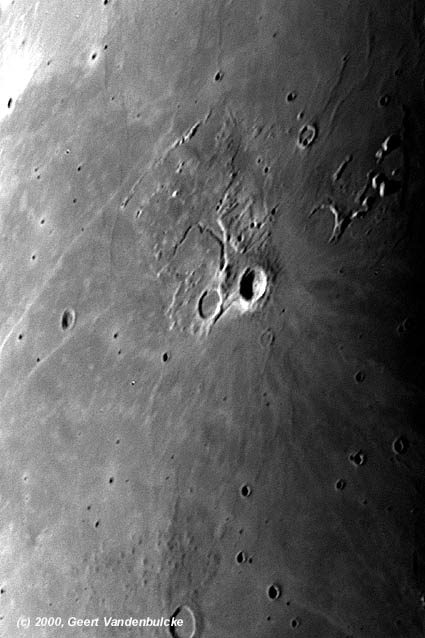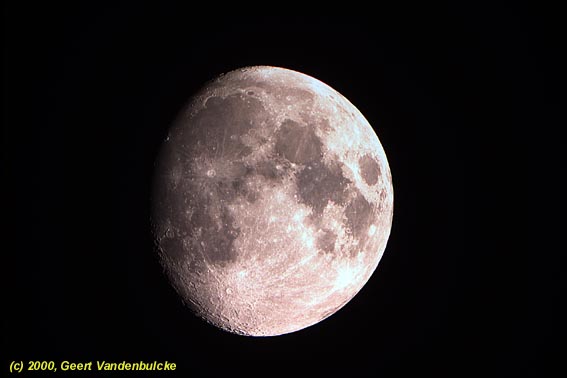
Moon 2000.

25 August 2000 : I had to get up early in the morning to make this image. The seeing was not that good but I wanted to "test" my ST-8 on the moon. I selected 10 images during imaging, this one is the best : 0.11 s exposure with ST-8 on my 250 mm f/15 SCT, using a Televue 2x Barlow. The craters in the centre are Herodotus (left) and Aristarchus.
Aristarchus is so bright that it can be seen even when that part of the moon is not directly lit by the sun. To the north of Aristarchus are the Aristarchus Rilles.
The great rille to the north of Herodotus is the Schröter Valley starting in to the south with a feature known as the "cobra-head", a 6 km diameter crater. The Valley is about 160 km long.
The crater at bottom centre is Marius, a lava-flooded crater about 40 km diameter. Just next to the last "e" of my name, a little crater is visible : Marius G, 3 km diameter. Look at the strange "dune like" features to the N-W of Marius. About 3 "Marius diameters" from the bottom of the image, slightly right of centre a small rille can be seen : Rima Marius, a sinusoid rille starting in the south at about 2 km wide, going north to crater Marius B, then turning west and narrowing to 1 km width.
Well, there is much more, please take a moonatlas such as the one made by A. Rükl to discover more ! (Warning : there are two little features on the image that may be mistaken for new craters but are most probably tiny ice cristals on the CCD detector; one is to the lower left of Herodotus, the second one is towards the upper left of the image, they look like little craters but the shadows are wrong !)
When I upgraded my ST-7 to ST-8 I also acquired the SBIG Color Filter Wheel CFW-8. Experimenting with it, I made a RGB image of the Moon on 11 August 2000, using my Lichtenknecker Flat Field Camera 190/200/760. The FFC is not optimised for planetary imaging and the Moon was very low above the southern horizon, but I think the result is good enough to be shown here. The R and G components were exposed for 0.11 s and the B component for 0.22 s, then RGB combination was done in CCDOPS W95. A sharpen filter was used on each component before combination, but there are no corrections to the colors of the image.
